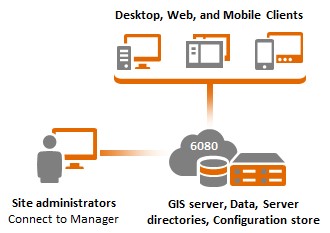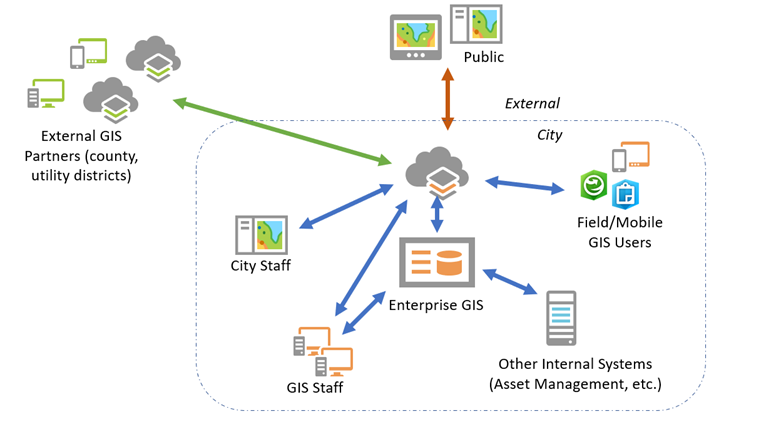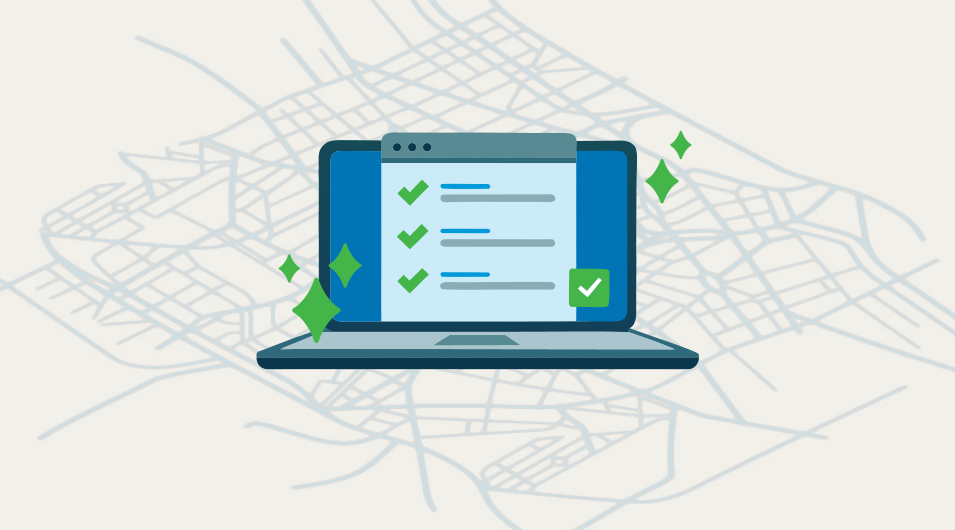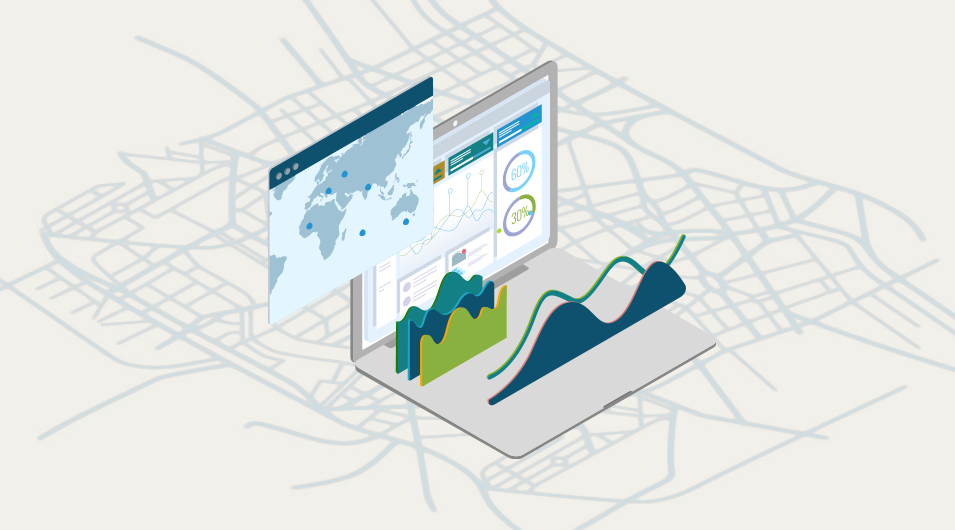Thought Leadership
Spatial Data Management Best Practices While Working Remote: What Local Governments Need to Know

The COVID-19 pandemic has forced an unprecedented number of local government employees to work from home. While very little is known about when they will be able to return to a physical workplace on a consistent basis, one thing is certain: the health of our communities depends on the vital services local governments provide. To keep services operating as normally as possible, local governments need to make sure that the right spatial data, tools, and protocols are in place so that staff—from the office to the field—can work remotely without any interruption in how they organize, update, and store the data that underpin so much of local government operations.
Double check your team is good to go with our top three spatial data management best practices for local government:
1. Take Advantage of the Cloud
Traditionally, remote work for local government meant fieldwork, but as an unprecedented number of office staff are now working from home, local governments are struggling to bring their full workforce of data-heavy users on board. Whether it’s unsustainable pressure on virtual private networks (VPNs) or the lack of access to laptop computers, local governments must find creative ways to allow staff to work from home.
There are two main options for remote access to your GIS data: one supporting desktop computer users and one supporting all users. To support desktop users, a remote desktop connection, over VPN, to their machine in the office provides an experience very similar to working in the office, although it does require having a computer at the employee’s home. Taking your office machine home and connecting via VPN will generally provide a worse experience with GIS software and data. A remote desktop approach does not provide the best support to mobile (smart phone or tablet) users, as the work is generally difficult without a keyboard and mouse.
A better option for supporting all users, including field and other staff who need access to GIS data, is a web-based approach. Users can view and edit data through a web browser or application or through GIS software. If you are using Esri software, you already have access to ArcGIS Online, with a “creator”-level license for each desktop license, and this can be a great way to get data and tools in front of staff who are otherwise unable to access them. You can also add more licenses as needed to enable field-workers or viewers to access sensitive (nonpublic or editable) data. For short-term capability, you can host your data in ArcGIS Online. The caveat is that you may need additional users if you need to secure access to your data. If you are not using Esri software, you can still use ArcGIS Online, look at alternative hosting options such as CartoDB, MangoMap, or NextGIS, or look at one of the open source JavaScript viewers as fits your needs.

Source: https://geoawesomeness.com/gis-cloud/.
2. Update Web Map Settings for Remote Work
Many cities are already using Esri software (ArcGIS Online, ArcGIS Enterprise, or ArcGIS Server/Portal) extensively for their web-mapping needs, but may have more users during this time because of an increased remote workforce presence. This may require adding more user licenses, or making sure that your internal resources can support the additional load. One potential barrier: if your Portal or web services are not accessible outside your internal network, thus requiring a VPN. This can be a problem for field staff. If you have enough user licenses, install a web adaptor on a public-facing machine and disable anonymous access. This will enable access to your internal data and applications from the field via Collector, etc. Just remember that you should never make editable data accessible to anonymous users, unless you actually want anyone and everyone to be able to edit those data!

Source: Esri.
3. Get Your Data in Sync
If users are editing a copy of your data online and another copy on the network, then you may have an issue synchronizing these. This can be headache, and in most cases the best approach is to try to have all edits go through the online hosted database for the duration. It is much easier to edit against the web services in ArcGIS Pro than ArcMap, and your GIS editors already have access to an ArcGIS Pro license through their desktop licenses (ArcGIS Pro licenses are hosted in ArcGIS Online by default, so check there if you are not sure). If you need to integrate hosted service edits to your network location (Enterprise or file geodatabase), FLO can work with you on building custom python scripts that will handle these synchronizing challenges.
Ultimately, with software such as ArcGIS Enterprise you can support both web and direct edits with a single source of data, which is a good way to expand data access and field data capture without having to deal with multiple copies of the data.
Once a suitable GIS structure is set up, the ability to support internal and field users and provide a single source of truth will pay dividends not just now but also in the future, bringing your data to more internal users, enabling curated public access, and providing the ability to quickly respond to changing needs and tasks with specific, targeted tools.

Source: FLO.
More Resources for Local Government Staff Working from Home
- For an overview of key items to consider in determining if your community can or should have telework options for local government personnel, check out After COVID-19: Is There a Place for Telework in Local Government? by the International City/County Management Association.
- Need a robust checklist of recommended government-specific technology policies and procedures for remote work? Read Working Remotely: A Guide for the Public Sector by the Government Finance Officers Association.
- Learn best practices for security and IT for remote government work in Security & IT by Telework.gov.
Is something is missing from our data management best practices? We want to hear from you. Use the contact form below to get in touch.




